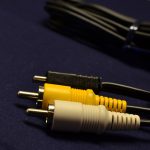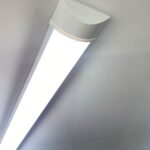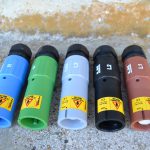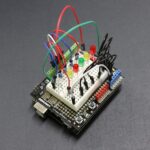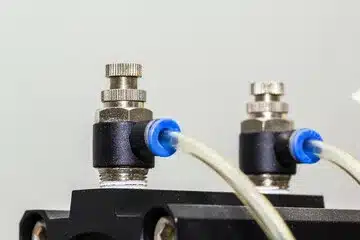
Introduction
Pneumatic fittings are essential components in pneumatic systems, providing a secure and reliable connection between various components such as valves, cylinders, tubes, and hoses. Pneumatic components are used in pneumatic systems to connect and direct compressed air or gas flow. These fittings come in a wide variety of types and designs, each suited for specific applications. This guide comprehensively covers the different types of pneumatic fitting connections, their characteristics, significance, and typical applications.
The Significance of Pneumatic Fitting Connections
The pneumatic fitting connections are incredibly significant based on the following perspectives:
- Leakage Prevention
- Quick and Easy Assembly
- Easy Installation
- Compact Design and Durability
- Versatility and Compatibility
- Modular Design and Flexibility
- Safety
- Reusability
- Cost-Effective Solution.
Different Types of Pneumatic Fittings: Exploring Their Varied Designs, Styles, and Typical Environments
Pneumatic fittings come in varied types with specific functionalities. Some of the common types include:
Pneumatic Straight Fittings: Pneumatic straight fittings, or pneumatic connectors or couplings, are versatile components that join two sections of tubing or piping in a straight line. They provide a secure and leak-free connection between pneumatic components. Depending on the application and other parameters, straight pneumatic fittings come in different connection types, sizes, and materials, such as brass, stainless steel, or plastic.
Pneumatic Elbow Fittings: Pneumatic elbow fittings, also called pneumatic elbow connectors, are designed to change airflow direction in a pneumatic system. They feature a 90-degree bend, allowing the air to turn at a right angle. Pneumatic elbow fittings come in various sizes and configurations to accommodate different tubing or piping diameters and connection types. These fittings are used when the tubing or piping needs to change direction or requires a sharp turn in the pneumatic system.
Pneumatic Y and T Fittings: Pneumatic Y and T fittings are standard components in pneumatic systems to split or merge airflow in different directions. These fittings are designed to provide a secure and leak-free connection between pneumatic components.They are typically made from durable materials, such as brass, stainless steel, or plastic, to withstand the pressures and demands of pneumatic applications.
A pneumatic Y fitting, also known as a ‘branch T’, has one input port and two output ports arranged in a Y-shaped configuration. It allows a single airflow source to be split into two separate streams. A pneumatic T fitting, called a ‘tee connector’, has one input port and two outputs arranged in a T-shaped configuration. It enables merging two separate airflow sources into a single stream by connecting one port to a component. In contrast, the two output ports are connected to other components or devices.
Push-to-Connect/Push-in Fittings: Push-to-connect fittings or quick-connect fittings are among the most popular choices for pneumatic systems. They feature a release collar that, when pressed, allows for the quick and effortless removal of the tube. These fittings allow for quick and easy installation without additional tools or equipment. Push-in fittings are widely used in industrial automation systems and machine tools where frequent and convenient assembly and disassembly are required.
Threaded Fittings: Threaded fittings utilise threaded connections to secure the fitting onto the mating component. These fittings integrate either male or female threads and need sealing compounds or thread tapes to ensure a leak-free connection. Threaded fittings find applications in compressed air systems, pneumatic tools, and air compressors.
Compression Fittings: Compression fittings are known for their high-pressure capabilities and resistance to vibration, making them essential components in both pneumatic and hydraulic systems. These fittings create a tight seal and comprise a sleeve and a nut that compresses the sleeve onto the tube.
Barbed Fittings: Barbed fittings are brass or plastic fittings that feature a barbed end that grips onto the tube’s inner wall. They are easy to install and provide a secure connection in low-pressure applications. Barbed fittings are commonly used in air blow guns, air nozzles, and general-purpose air hoses.
Camlock Fittings: Camlock fittings, also called cam and groove fittings, are widely used in pneumatic systems for their secure and sealed connection, ease of use, and versatility. They comprise two halves, a male adapter, and a female coupler, that efficiently interlock by pressing the handles down. Camlock fittings, such as hose assemblies, pneumatic tools, and fluid transfer systems, are commonly used in applications requiring frequent connection and disconnection.
Apart from the mentioned types of pneumatic fittings, other types include pneumatic function fittings, pneumatic union fittings, tube-to-tube fittings, etc.
The Bottom Lines
Pneumatic fittings come in various types and designs to cater to the specific requirements of pneumatic systems. These fittings are of great importance, and understanding their characteristics and applications will help you choose the suitable fitting for your particular needs. Additionally, the basic knowledge of these components ensures efficient and reliable operation of different pneumatic systems in multiple industrial settings.








